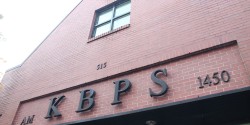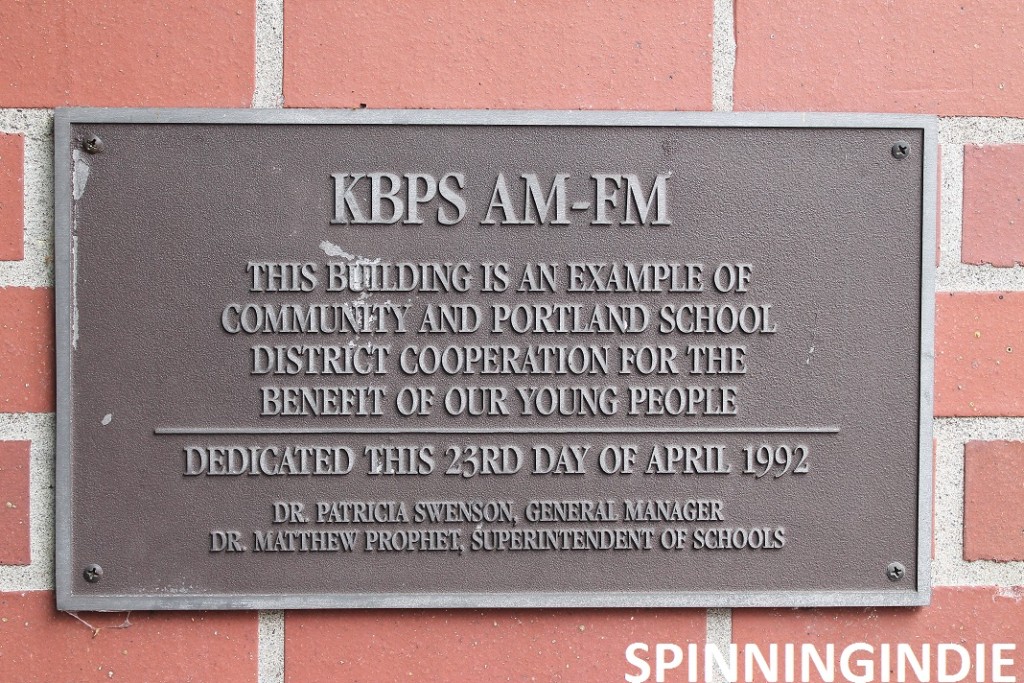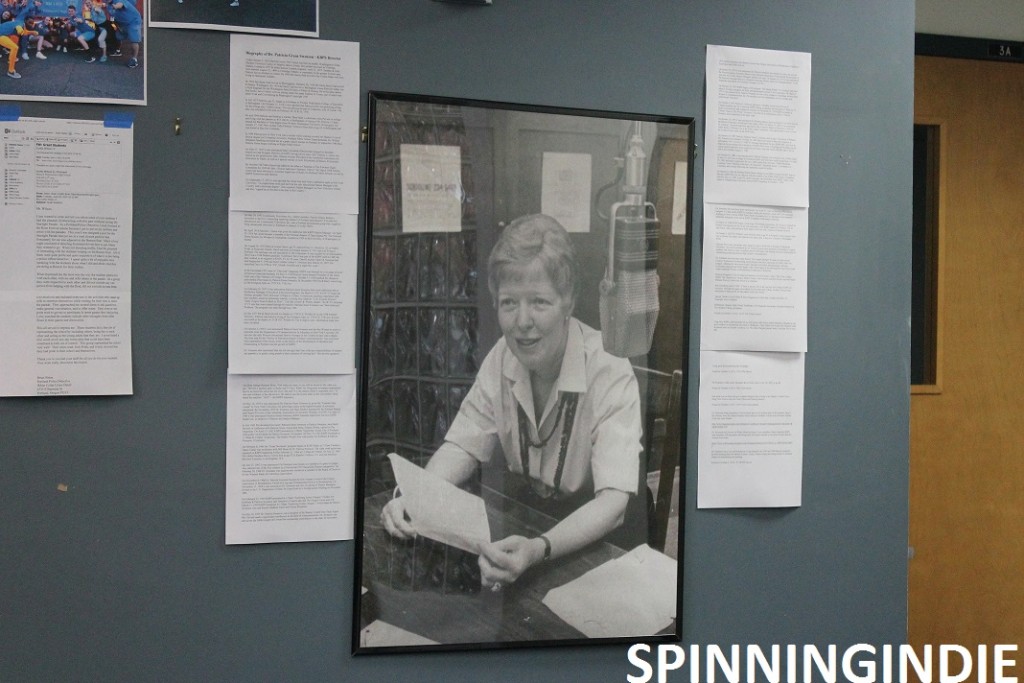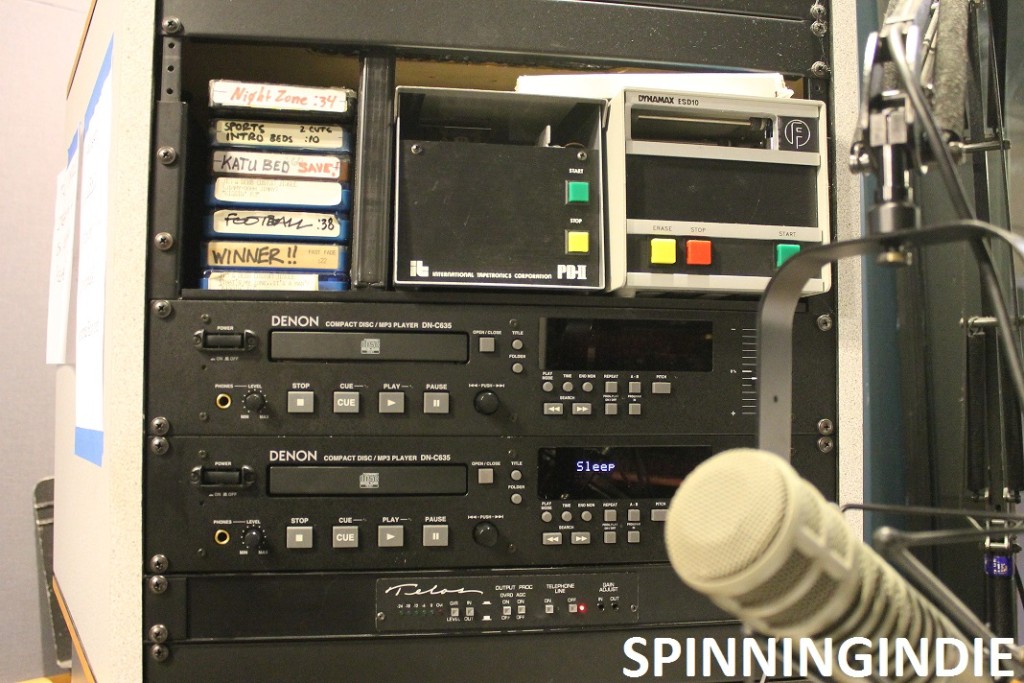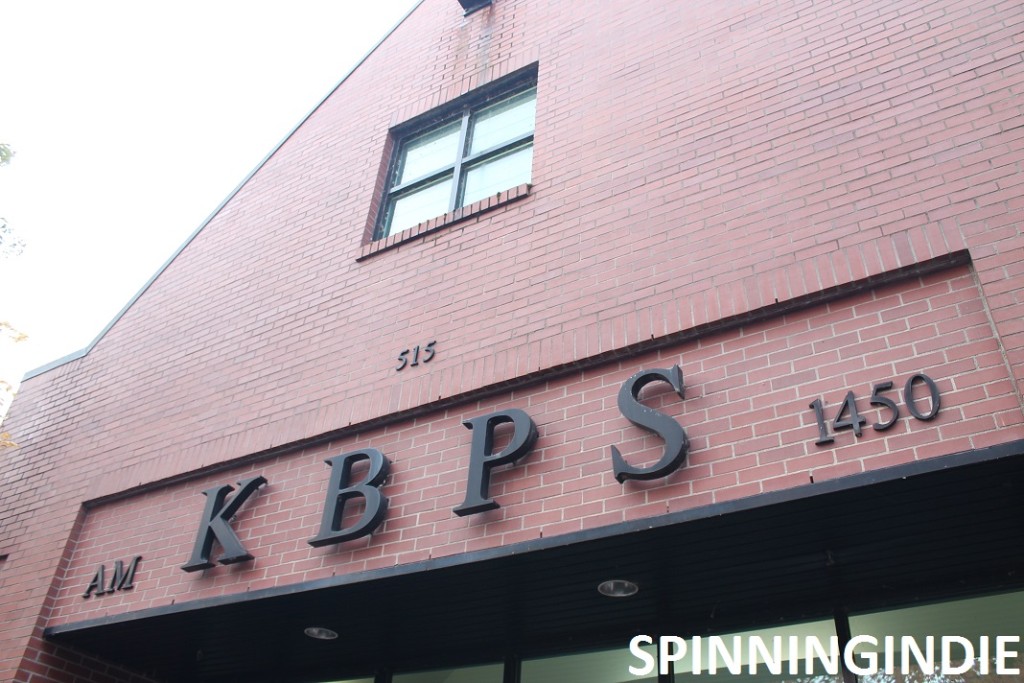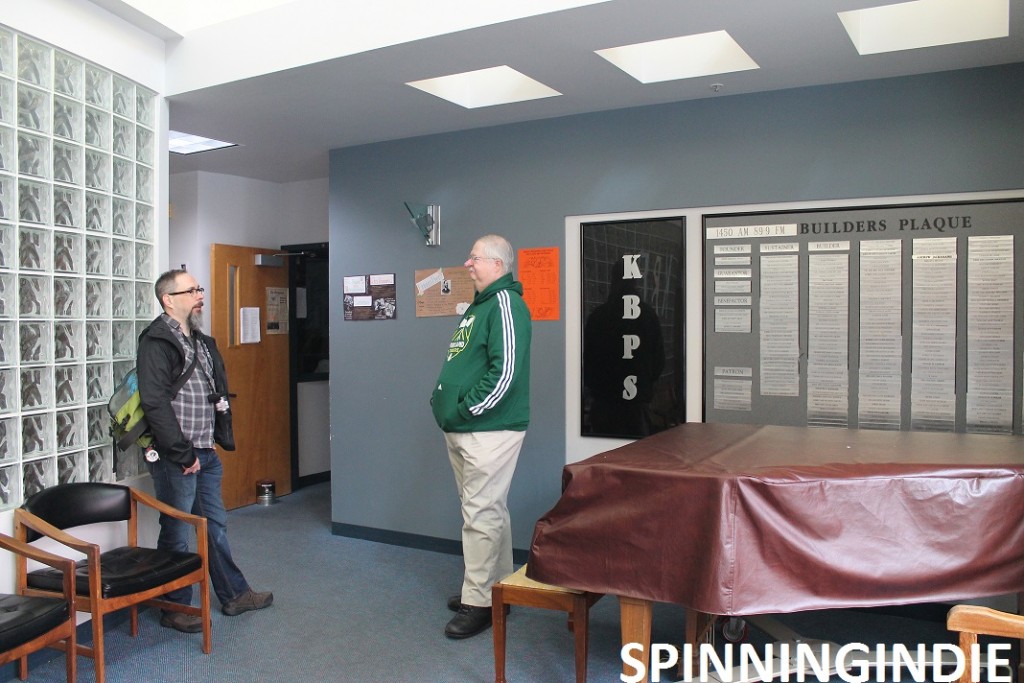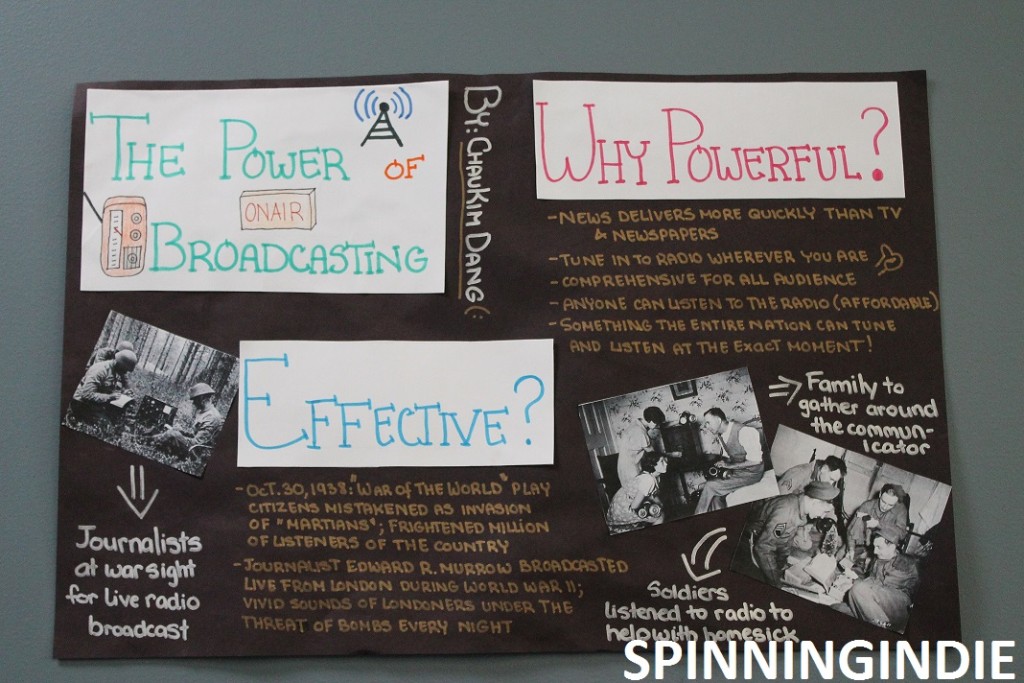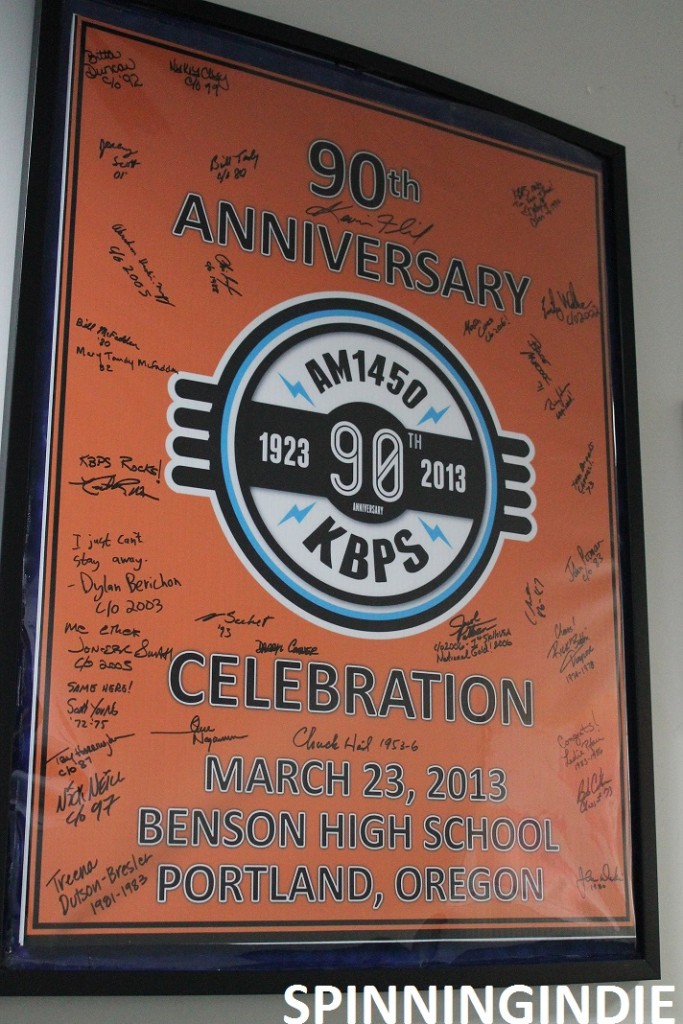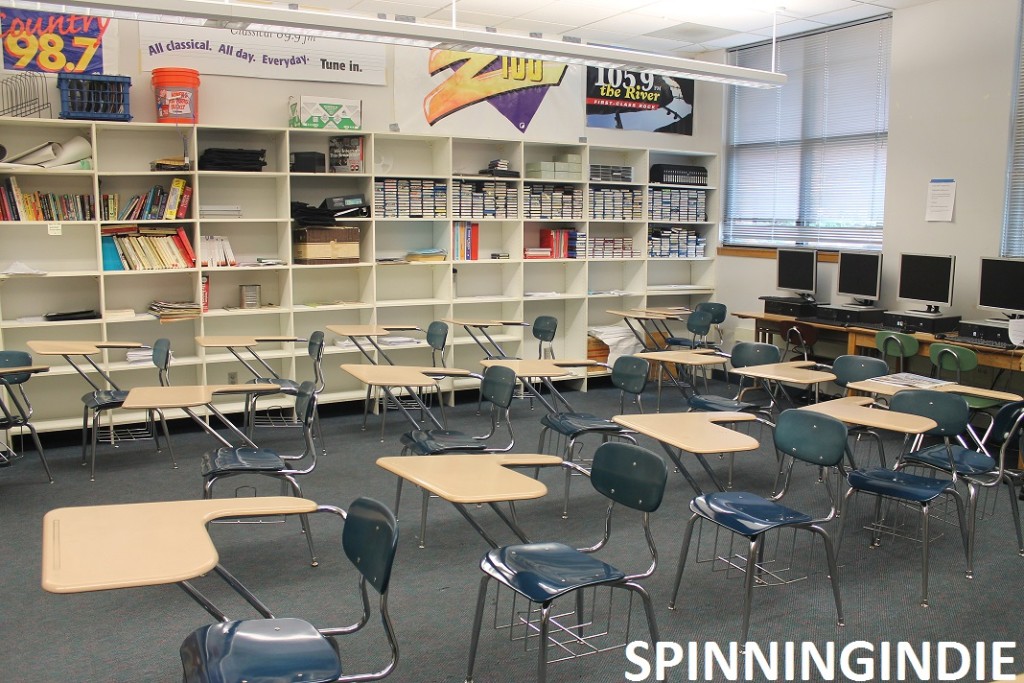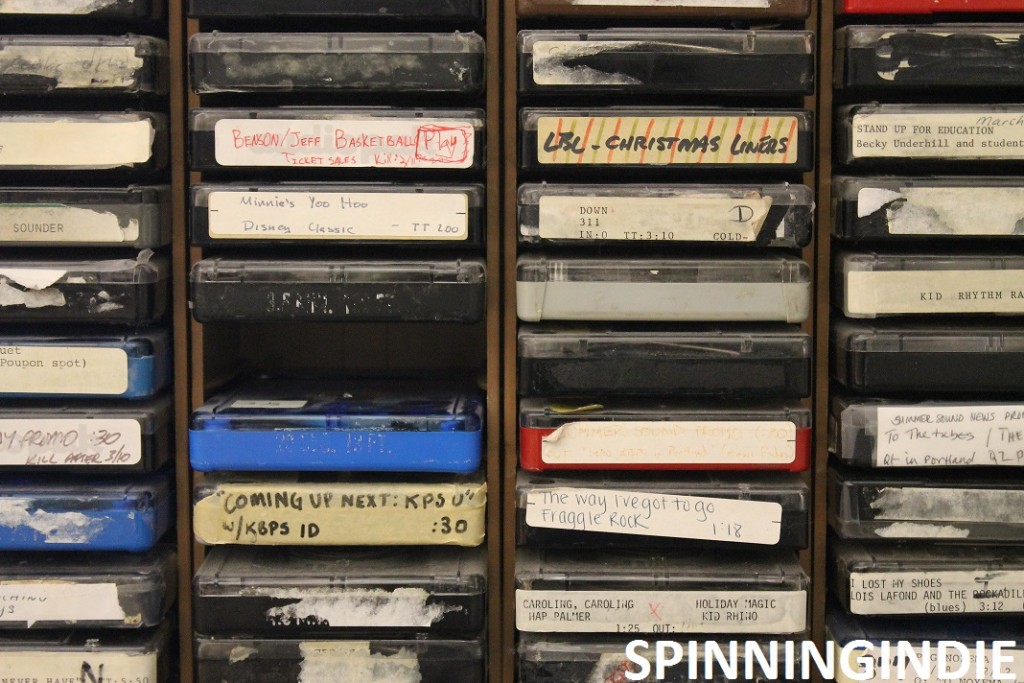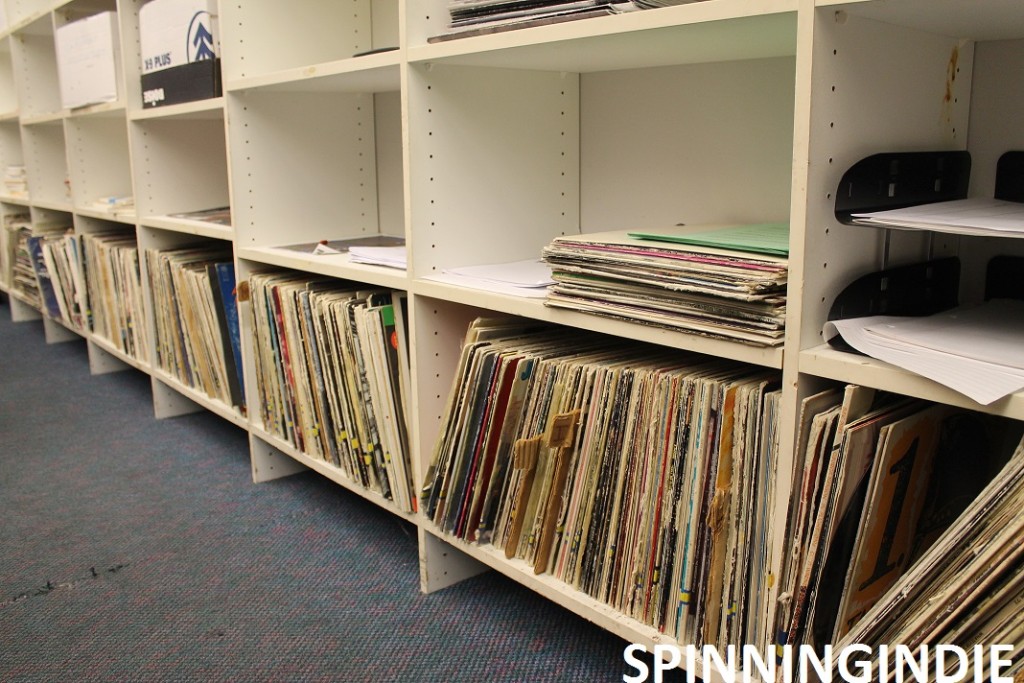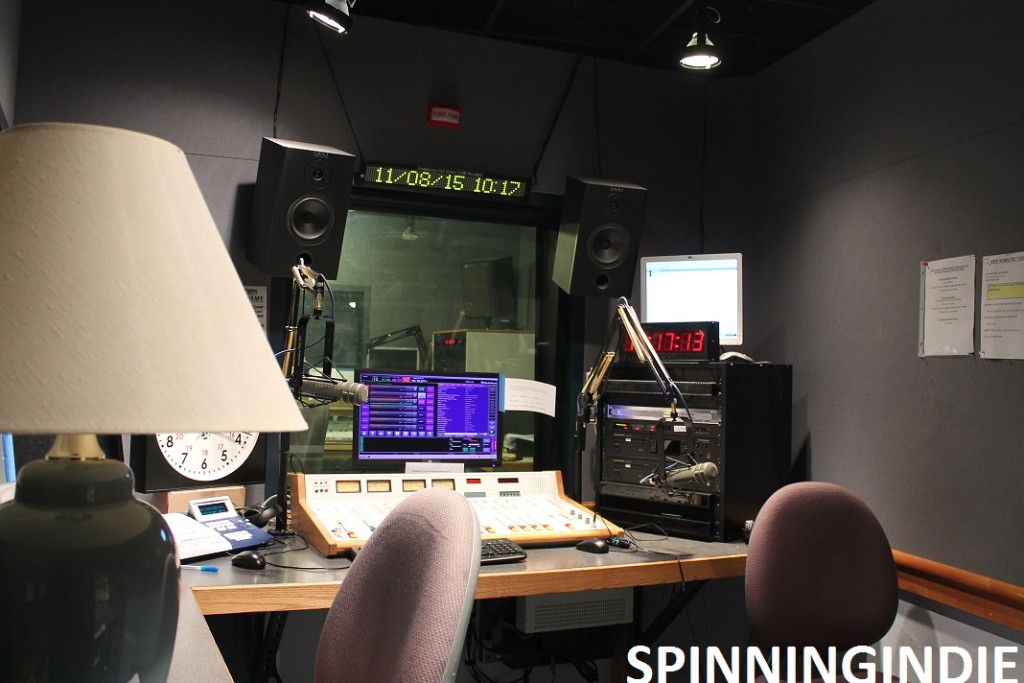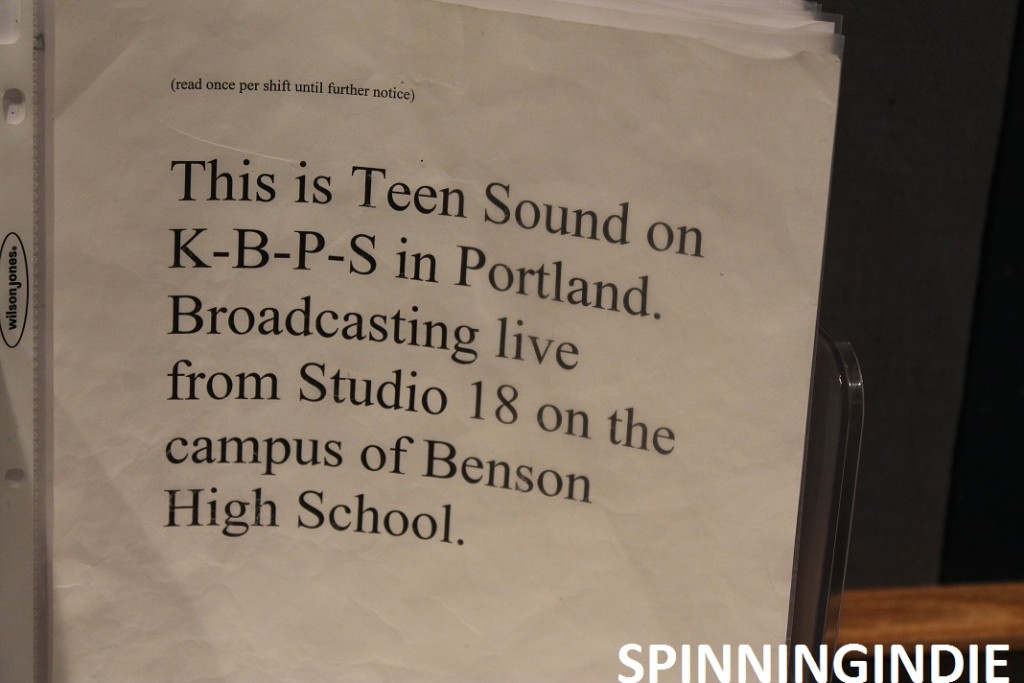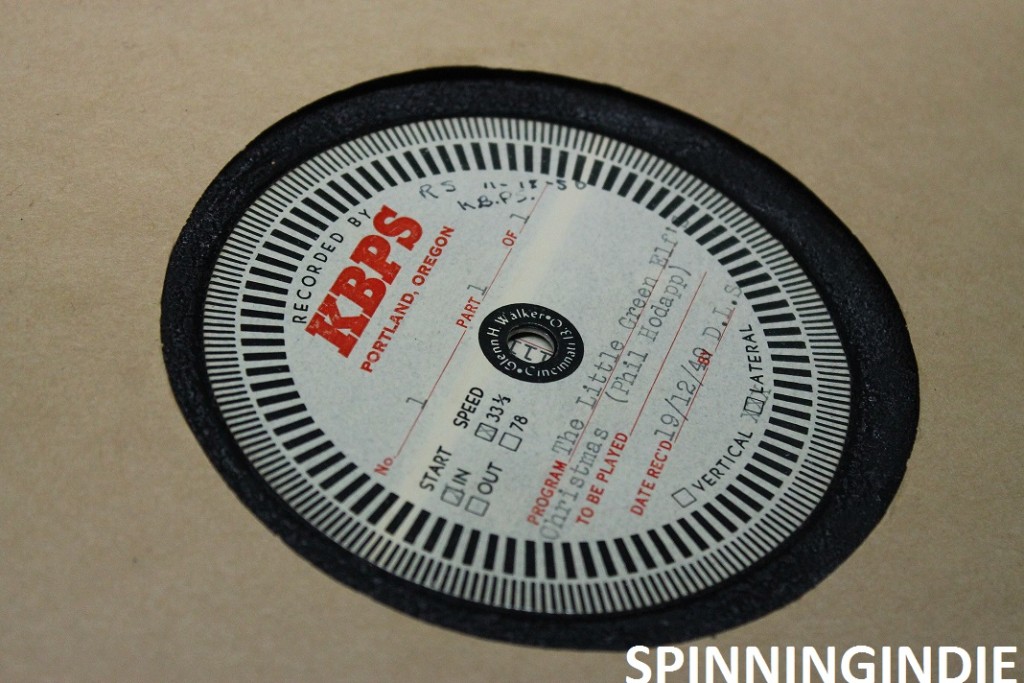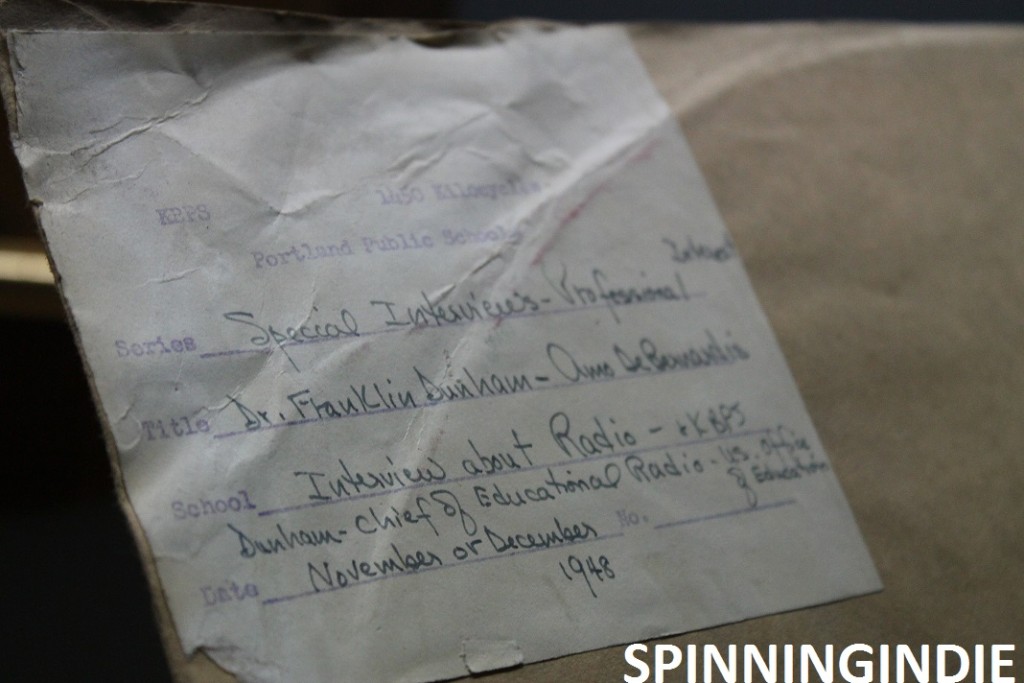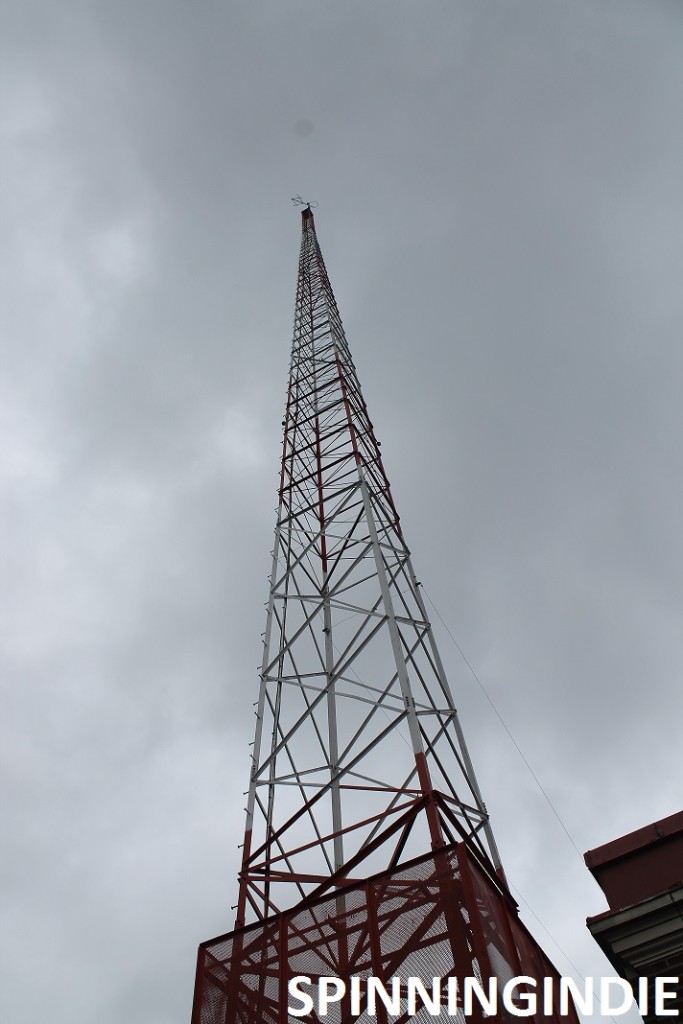Radio Survivor readers are well aware of my passion for radio history and my appreciation for high school radio. For those reasons, it was a thrill to finally visit KBPS 1450 AM in Portland, Oregon a couple of months ago. Licensed to Portland Public Schools, the station is housed at Benson Polytechnic High School (thus the call letters, K-B-P-S). The historic AM station launched in 1923 and has been a haven for Portland Public School students ever since.
KBPS’ Storied Past
Last summer I wrote up an account of the early history of KBPS after reading a fascinating dissertation by the station’s former General Manager (from around 1947 to 1994) Patricia Green Swenson. The station launched in May, 1923 with the original call letters KFIF (changed to KBPS in 1930) and the early days of the station included mostly live programming ranging from music performances to lectures.
Over the years students played a large role in the station (Benson students ran the station from the beginning) and starting in 1939, students from all of the Portland public schools were invited to participate, including kids as young as elementary school age.
Touring KBPS in 2015
On Sunday, November 8, 2015, I headed to Benson Polytechnic High School and met up with KBPS’ Operations Manager Kevin Flink. It was a treat talking to Flink as he has a long history with the station, beginning as a student sportscaster probably in the fall of 1969. After graduation he continued to work at the station over summer vacations and was hired in 1975 as a producer/production assistant. He eventually went on to teach radio classes and manage the station, retiring from teaching in 2007. The call of the station lured him back, however, and he’s been a part-time manager since 2012.
As he toured me through the station, Flink spoke passionately about not only radio, but about the station and the students. He said, “It’s been a wonderful ride.” Housed in its own building on campus, KBPS moved into its current location in 1992. Flink recounted, “When we moved in here I thought I’d died and gone to radio heaven.” I visited with my Radio Survivor colleague Paul Riismandel and when we approached the entrance to the station, it was impossible to miss the large call letters above the door and the welcoming entrance. We initially hung out in the station lobby, eyeing a collection of plaques commemorating those who helped fund the current station building.
KBPS as a Learning Lab for High School Students
The lobby also has piano, some seating, and an homage on the wall to KBPS’ long-time General Manager Patricia Swenson. As we walked down the hallway, there were more displays, including student posters from radio classroom assignments. I was charmed to see posters about topics like the history of radio sportscasting and about important radio figures, including physicist Heinrich Hertz. There was also a poster outlining the Benson High School Bell Schedules. To an outsider, that might seem rather mundane, but the daily high school schedule is critical to know when running a high school radio station operated by students who are ruled by their schedules.
During higher budget years, KBPS had a large staff of around 23 people, but today there’s just a Flink along with a full-time teacher (Broadcast Program Teacher Steve Naganuma) and contractors who provide help with engineering and other areas. For a time, the KBPS space also housed KBPS-FM, which began in the 1980s as an all classical station. KBPS-FM (now All Classical Portland KQAC-FM) later separated from the school district and moved out of the building in 2014.
Off of a long hallway are several classrooms where radio students take classes and do work for the station. Flink told me that between 25 and 30 sophomores rotate through a 9-week radio class each quarter, which is around 80% of the entire sophomore class. Sophomores have their own radio classroom, which also has two production rooms attached to it.
KBPS also has a classroom for high school seniors, where I spied a collection of LPs, 7″s and carts. There were also quite a few carts in the other classroom and Flink told me that some of them came from other radio stations and were used for assignments. I also noticed many with KBPS work on them, including a cart that hints at the period of time when KBPS offered up its airwaves to Portland State University station KPSU (which didn’t have its own terrestrial signal – see my KPSU tour here).
Flink said that the main senior project requires doing a 30 minute radio program. After spying the records, I asked Flink if there were turntables and he told me that there was one turntable and one stylus, joking that it’s like Barney Fife with “one bullet in his pocket.” The stylus is kept under lock and key mainly because of issues in the past with students trying to do scratching maneuvers using the turntable. Flink guessed that around 65 students take radio classes each quarter, when one accounts for sophomores, juniors, and seniors.
As we made our way to the KBPS studio, Flink told me that the control room could only be used by radio majors, which means that no sophomores have access. When on the air, students can play pre-screened music on the station’s computer. They are asked to stick to a particular format, which could include new music, rock, or teen music. During our visit there were no students at the station and we heard a mix of music, including David Bowie’s “Space Oddity.” Flink said that they were splitting the station’s stream during the weekend of my visit in order to run sports over AM and music over FM. For cases like this, they have two separate control rooms, one for the AM broadcasts and one for streaming broadcasts. Ultimately, Flink said they’d like to run two streams simultaneously so that more students can get on the schedule.
Besides sports broadcasts and music shows, KBPS also airs school board meetings. In addition to playing music, DJs also do breaks to report on news and weather and Flink said it’s typically “2-man shifts.” That phrase piqued my curiosity about the number of girls at the station. When asked, Flink told me that up until 1972 the station was all boys, but that things have changed dramatically and that today there are probably more girls than boys in the radio program. In part he surmised that it’s because “it’s a clean major,” as opposed to say the school’s building construction major.
As we continued our tour, Flink pointed out a room that is being converted into a workroom for music production. The school is in the process of getting keyboards and guitars and already has some work stations where students can produce music. He explained, “not everybody wants to be a DJ.” When we reached Flink’s office and the end of our tour, we got to see some historic gems, including old black and white photographs of the station and vintage transcription discs containing KBPS-AM programming dating back to the 1940s. Flink had just found the stack of dusty records and it was amazing to glance through them and see the types of programs that the station used to produce with elementary through high school-aged kids.
Back in the days before tape recorders, radio transcription discs were used to archive live radio. Housed on oversized records (around 16 inches compared with the 12 inch records that we are generally familiar with), the discs at KBPS contained a variety of educational programs, drama, and even a 1948 interview with the U.S. Office of Education’s Chief of Educational Radio. I’m sure this would be a fascinating listen, as it’s from around the time that he published a short Office of Education book on FM educational radio.
After wrapping up inside, we took a short walk to the back of the building to take a look at the KBPS AM radio tower. It was a rare opportunity for me to see such a commanding radio tower close up, made even more special because of its location at a high school station and its incredible legacy.
Thanks so much to Kevin Flink for the great tour of KBPS-AM, particularly since it was on a Sunday morning! You can hear some of my interview with Flink on Radio Survivor Podcast #24, which is worth a listen if you want to learn more about high school radio and KBPS. This is my 97th station tour report. I have one more tour recap left from 2015 and I’m already planning for some radio station tours in 2016. It’s hard to believe that one of those stations will be my 100th tour. See my most recent field trips on Radio Survivor and see all of my station tour reports on Spinning Indie.

